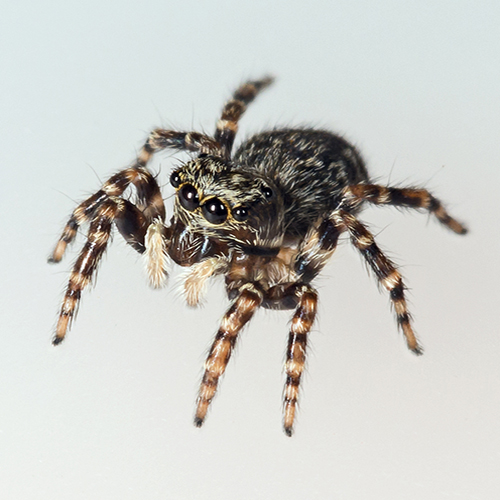
Only 8 of these 170 Seattle spider species are commonly found both outdoors and in houses.

Spider Myth Resources
Explore even more! Additional spider resources and more myths (poor spiders can't catch a break!).
Fact: This seemingly simple idea conceals many false assumptions. In reality, house spiders are usually not the same species as the yard or garden spiders outside the house.
House spiders belong to a small number of species specially adapted for indoor conditions (constant climate, poor food supply, very poor water supply). Some house spider species have been living indoors at least since the days of the Roman Empire, and are seldom to be found outside, even in their native countries (usually Europe). Many of these species now live in houses worldwide, and most have been carried by commerce to more than one continent. Few are adapted to North American outdoor environments.
House spiders colonize new houses by egg sacs carried on furniture, building materials and so forth. They usually spend their entire life cycle in, on or under their native building. If a large number appear at a specific season, it is usually late summer (August and September)—not a notably cold time of year!—rather than fall, and their appearance coincides with the mating season of the given species. What you are seeing is sexually mature males wandering in search of mates.
The females and young remain hidden for the most part, in crawlspaces, storage areas and other neglected rooms; wall and floor voids; behind furniture and appliances, etc. Generally fewer than 5% of the spiders you see indoors have ever been outdoors.
In contrast, outdoor spider species are not adapted to indoor conditions. Any North American spider that needed artificial shelter for the winter, would have been extinct long before Europeans arrived! Spiders are "cold-blooded" and not attracted to warmth. They don't shiver or get uncomfortable when it's cold, they just become less active and eventually, dormant. Most temperate zone spiders have enough "antifreeze" in their bodies that they won't freeze at any temperature down to -5° C.; some can get colder. The few typical outdoor spiders that do end up indoors, die or at least don't reproduce.

Only 8 of these 170 Seattle spider species are commonly found both outdoors and in houses.

Explore even more! Additional spider resources and more myths (poor spiders can't catch a break!).